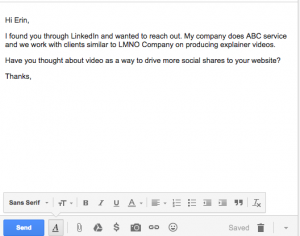
In an ever-changing digital landscape, success often comes down to what you are–and aren’t–doing online. What you do and don’t know about internet marketing can ultimately make or break your online business.
The problem is…
For so many marketing managers, having to keep up and differentiate between what’s “need-to-know” and what’s simply a temporary fad is a pain.
So which ones do you need to focus on?
Here’s five that I believe are rock-solid and will make you look like a superstar. So take the time to read up on them and start experimenting with them to advance your organisation and increase prospective clients.
Marketing Automation
Let’s start with a line taken from a popular Forbes article published last year:
“Marketing automation is one of the most valuable tools the modern day marketer can employ and yet it’s been adopted by less than 10% of companies.”
Other figures have shown this number to be as high as 49%, but I believe there’s some disparity in those estimates–primarily around the role of automated emails.
So what is marketing automation, exactly?
Here’s how Hubspot defines marketing automation:
“Marketing automation refers to the software that exists with the goal of automating marketing actions. Many marketing departments have to automate repetitive tasks such as emails, social media, and other website actions. The technology of marketing automation makes these tasks easier. “
In short, it’s automating different steps involved in progressing leads through the lead funnel: taking users from site visitors and converting them into consumers.
How can you implement this in your business? Here are some common applications:
- Turn eCommerce cart abandonment into a sales opportunity. With a number of research studies identifying that approx 65% of visitors to online shopping carts do not purchase, many ecommerce businesses are missing huge opportunities to drive sales by recapturing these visitors. Marketing workflows allow you to automate an email to a user leaving the cart, encouraging them to come back by offering them a coupon code, for example. This email offer can be tailored depending on what pages they’ve viewed or specific products they’ve clicked on, supercharging the impact.
- Qualify and prioritise your website leads. If you’re already collecting emails and leads via your website, then congratulations–you’re already doing what so many businesses aren’t! But with marketing automation, you can further qualify these prospects depending on what pages they’ve visited, and presenting them with related content.
- Nurture your leads. When you collect email addresses from your website, some may be hot leads and some are simply researching. With marketing automation, you can nurture the “cold leads” by sending time- and action-based automated emails to progress them from cold to hot.
TIP: There are plenty of other ways to use marketing automation to your advantage. If you’d like to explore your opportunities, read through some software reviews on G2.
Google Tag Manager
This may be a dry topic for some, but for those unfamiliar with Google Tag Manager, it’s super-exciting for a few different reasons.
Have you ever needed to add a script to your organisation’s website, only to be told that you’d need to send it to the developer and it wouldn’t be done until the next day or week?
With Google Tag Manager,, this is no longer an issue. This convenient little tool allows your developer to initially add the GTM script and then gives you access to instantly add, remove or modify your scripts/tags. No more waiting on someone else!
The other big advantage of using Google Tag Manager is the speed benefits it provides your site.
With all the 3rd party scripts you add to your website for remarketing, marketing automation, social media widgets, etc., your site gets bogged down and your web page loading time is drastically slowed. By implementing GTM, you’re able to use just one script–the GTM script–allowing GTM to load the others asynchronously and speed up your website’s overall load time.
We often see the following common scripts on sites, which can be implemented using Google Tag Manager:
- Google Analytics
- Adwords conversion tracking
- Remarketing tags
- User tracking
- Pop-up software
Video
BuzzSumo summarised the 2016 Social Media Marketing World event citing keynote speaker and founder of Social Media Examiner, Michael Stelzner, with the takeaway that the current growth in video marketing is “the biggest surge he has seen.”
YouTube started back in 2005 and was bought by Google in 2006, so online video is not a recent phenomenon–at least not in internet years.
But there is a recent surge and, while it is a result of the huge rise in smartphone use, the role of Facebook can not be underestimated.
Facebook is now surpassing YouTube in a number of video metrics including total video views and uploads. Techcrunch reported in November of 2015 that Facebook reached 8 billion video views, up from 4 billion just seven months earlier.
If you want to use Facebook as a platform to engage with your audience, then turning your attention towards publishing videos is a must.
Facebook’s organic reach has been a sore point for marketers after spending a lot of time and money to build an audience, only to see organic reach sit between 2 – 10%.
SocialBakers, a social media research company, reported that native Facebook videos will get you a 135% better organic reach than a photo. This means you can get your message in front of more of your audience and spend less money on advertising to do it.
Which brings us to live video.
It started with Meerkat and Twitter’s Periscope. These video platforms have since been met with Facebook Live and YouTube pivoting to compete. But, although this space is still incredibly raw, it comes with great opportunity.
Obviously, if your business has a natural synergy with the Facebook platform and that’s where you’ve chosen to engage your audience, then you should be looking at how you can begin utilising Facebook Live. The increase in organic reach is just too awesome to pass up!
Snapchat
Snapchat CEO Mark Spiegel announced in March this year that the company had reached 8 billion daily video views, right behind Facebook.
If you previously thought Snapchat was just a flash-in-the-pan platform for tweenies, think again. Snapchat is on one heck of a trajectory curve.
But If you’re still skeptical about its ability to diversify its membership base, check out these stats from ComScore, cited by MarketingDive.
In 2015, Snapchat grew its 18-24 base by 56%, while its 25-34 year old users increased 103% and, most notably, its over-35 user base grew 84%, according to comScore.
So what do you need to know and how can you get started?
Great questions. Check out ‘5 Creative Ways Brands Are Using Snapchat’ over on the Convince & Convert blog for some inspiration.
In general though, be unique, lean on some influencers that your audience cares about, and get your fans involved.
Edison Research released findings of their Infinite Dial Report and they too report some impressive numbers for Snapchat. They report 23% of all Americans aged 12+ use Snapchat, coming in third behind Facebook (64%) and Instagram (29%). Not bad considering the same research had Snapchat at 3% only three years earlier. But it’s when they look at 12 – 24 year olds that things get interesting. The Infinite Dial report has Snapchat knocking Facebook off its perch to be the number one social network with 72%, whilst Facebook (68%) and Instagram (66%) following close behind.
Google’s Accelerated Mobile Pages Project (AMP)
By now, you’ve probably heard of Facebook’s Instant Articles. If you haven’t, you probably haven’t realised you have. Ever clicked on a story within your Facebook timeline and noticed the quick time in which it took for the article to load? You’ve read a Facebook Instant Article!
This development is in no doubt part of the inspiration behind AMP. That’s not to say that Google hasn’t been focusing heavily on mobile experience and in particular, browser speed and how it impacts user experience. If you’re an SEO you’re constantly looking to improve page speed to keep up with Google’s public recommendations, this is something you should definitely look into.
So what is AMP?
In simplest terms, when implemented, it strips your blog posts/pages of much of the unnecessary code to allow for super-fast page load times. Google and Facebook both know how reducing page load time improves user experience.
That’s why they’re encouraging publishers to deliver fast pages to users. If they do, then there’s no reason for users to go searching for content anywhere else.
So, what’s the takeaway?
The bottom line is, the faster your site loads, the better the user experience, the better your search performance, and the more your business grows and becomes successful.
Now, Facebook Instant Articles isn’t for everyone. Access is limited to larger publishers–at least for now. So, that’s why we’re focusing on Google’s AMP.
If you publish blog posts/articles on your website, go and implement AMP on your website right now.
TIP: If you’re running on WordPress, there’s an official AMP plugin by Automattic (owners of WordPress) that will automatically implement AMP pages.
Putting Marketing Trends to Work for Your Business
Surviving in today’s ultra-competitive online marketing world doesn’t have to be a struggle. By analysing long-term trends, implementing what works and speaking your audience’s language, you can create a powerful funnel that drives targeted leads and turns them into sales like clockwork.
Start boosting your revenue and implement at least one of the marketing strategies you learned about in this article, today.
This article originally appeared on OnQ Marketing Blog and has been republished with permission.
Digital & Social Articles on Business 2 Community(75)
Report Post





